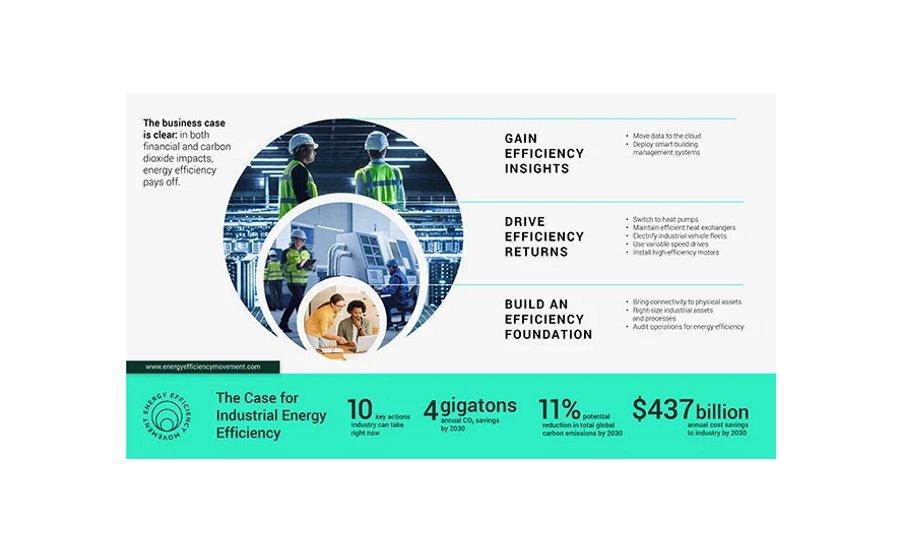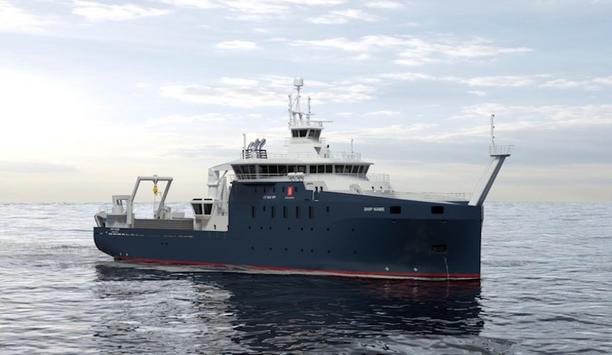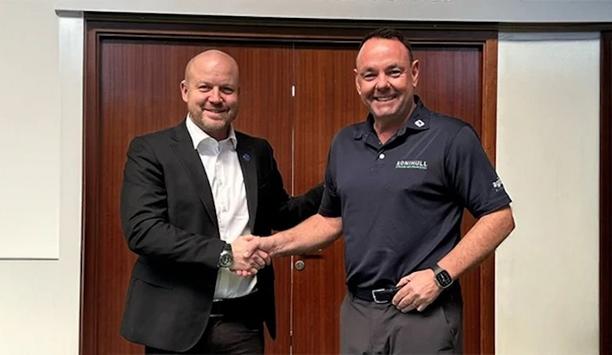Ahead of COP28, a new report gives industries a roadmap to save 11% of global emissions by 2030 while saving $437 billion along the way.
The report, named ‘The Case for Industrial Energy Efficiency’ published by the Energy Efficiency Movement (EEM), outlines ten key actions that does not require new technologies or policy decisions, but promise to save emissions.
The Case for Industrial Energy Efficiency in short:
- 10 mature, scalable energy efficiency key actions can deliver 4 gigatons of carbon savings annually (11% of total emissions) by 2030.
- Actions also show energy efficiency’s financial upside: annual cost savings of $437 billion by 2030.
- Published by the Energy Efficiency Movement and supported by leading global industrial players including Alfa Laval, ABB, and Microsoft.
Ten key actions of the report
The ten key actions of the report could be put into practice today to reduce carbon emissions
The ten key actions of the report could be put into practice today to reduce carbon emissions, and almost half of the emissions savings could be achieved by 2025. The actions are divided into three pillars: Building an efficiency foundation, Driving efficiency returns, and Gaining efficiency insights. Each action has been individually quantified in terms of carbon savings and financial benefits.
“Energy efficiency is crucial for meeting the Paris Agreement on time and the industry plays a major role in making it happen. There is an urgent need for immediate response and action, and this EEM report visualises key actions to save energy and reduce emissions already today,” says Thomas Møller, President of Energy Division, Alfa Laval.
One example of Alfa Laval’s contribution to The Case for Industrial Energy Efficiency concerns energy efficient heat exchangers.
Key action no. 7 – Maintain efficient heat exchangers
Heat exchangers are used widely across the commercial and industrial sectors, in areas such as building heating and air conditioning, refrigeration, and data centre and fuel cell cooling, yet they are rarely maintained adequately. On this action, the report states that:
- Up to 2.5% of global carbon emissions can be saved just by maintaining and regularly servicing heat exchangers.
- New heat exchangers can be up to 25% more efficient than old ones.
- The replacement of obsolete heat exchangers in industrial and commercial settings could save between 136 and 339 MtCO2 a year.
Energy Efficiency Movement
The IEA has said that net zero will require a doubling of the rate of progress on efficiency"
The Energy Efficiency Movement joins stakeholders together across many sectors and Alfa Laval has been an active member since the start.
“This is our contribution to the upcoming COP28 discussions that will be looking at solutions on net zero targets. The IEA has said that net zero will require a doubling of the rate of progress on efficiency and a tripling in annual efficiency-related investment," said Mike Umiker, Managing Director, Energy Efficiency Movement.
He adds, "To that end, we are furnishing executives with data and insights to help build their companies’ business cases for energy efficiency improvements.”
Energy efficiency is industry’s biggest emissions ally
Mike Umiker continues, “The report demonstrates how investments in efficiency can serve as a valuable hedge against energy and carbon price volatility, while making a true, needle-moving impact on emissions. Energy efficiency is industry’s biggest emissions ally this decade.”











